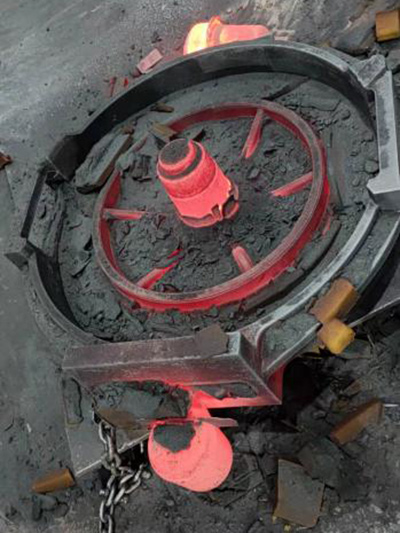The Iron Sand Casting Process An Overview
Iron sand casting is a highly efficient and versatile manufacturing process used to create complex metal components from molten iron. This technique utilizes iron sand as one of its primary materials. Iron sand, often derived from coastal regions or riverbeds, contains iron-rich minerals that can be separated and purified for use in casting. The casting process is favored across various industries due to its adaptability, cost-effectiveness, and ability to produce intricately shaped objects.
The Characteristics of Iron Sand
Iron sand is typically black or dark gray in color and is composed mainly of magnetite, a naturally occurring iron oxide. The sand is known for its magnetic properties, allowing for easier separation of the iron content from impurities. This feature makes it a valuable resource for the iron casting process, as it can yield high-quality iron when processed correctly. The fine granules of iron sand provide excellent molding characteristics, contributing to a smooth surface finish on the final products.
The Sand Casting Process
The sand casting process involves several key steps preparing the mold, melting the iron, pouring the molten iron, and finally, cooling and finishing the cast piece
.1. Mold Preparation The first step in the sand casting process is to create a mold. This involves compacting a mixture of iron sand and a binding agent (often clay) around a pattern that represents the final product. The pattern can be made from various materials such as wood, metal, or plastic, and is usually slightly larger than the intended cast to account for shrinkage as the metal cools.
iron sand casting process

2. Melting the Iron Once the mold is prepared, the next step is to melt the iron. This is typically done in a furnace that can reach high temperatures necessary to liquefy the iron. The molten iron is carefully monitored for temperature and consistency to ensure that it flows well into the mold cavities.
3. Pouring the Molten Iron After melting, the molten iron is poured into the prepared molds. The pouring must be done at a controlled rate to avoid splashing and to ensure that the mold fills completely without leaving air pockets that could compromise the integrity of the casting.
4. Cooling and Finishing After the mold has been filled, the molten iron is left to cool and solidify. This cooling phase can take several hours depending on the size and complexity of the cast piece. Once cooled, the sand mold is broken away, revealing the cast iron product. This piece may then require additional finishing processes such as grinding, polishing, or machining to meet the desired specifications and surface quality.
Advantages of Iron Sand Casting
One of the significant advantages of iron sand casting is its ability to produce large, complicated shapes with excellent surface detail. The process is also cost-effective due to the relatively low price of materials and the scalability of production, making it suitable for both small and large production runs. Moreover, since iron sand is abundantly available in many regions, sourcing the primary material is often straightforward and economical.
Conclusion
The iron sand casting process remains a cornerstone of metal manufacturing due to its versatility and efficiency. With its ability to produce high-quality castings at reduced costs, it finds applications in various industries, including automotive, aerospace, and machinery. As technology advances, the iron sand casting process will continue to evolve, incorporating modern methods and materials to enhance product quality and production efficiency. Together, these elements affirm the significance of iron sand casting in today's manufacturing landscape.
Post time:Aug . 01, 2024 07:21
Next:Key Processes and Considerations in the Sand Casting Workflow for Optimal Results
